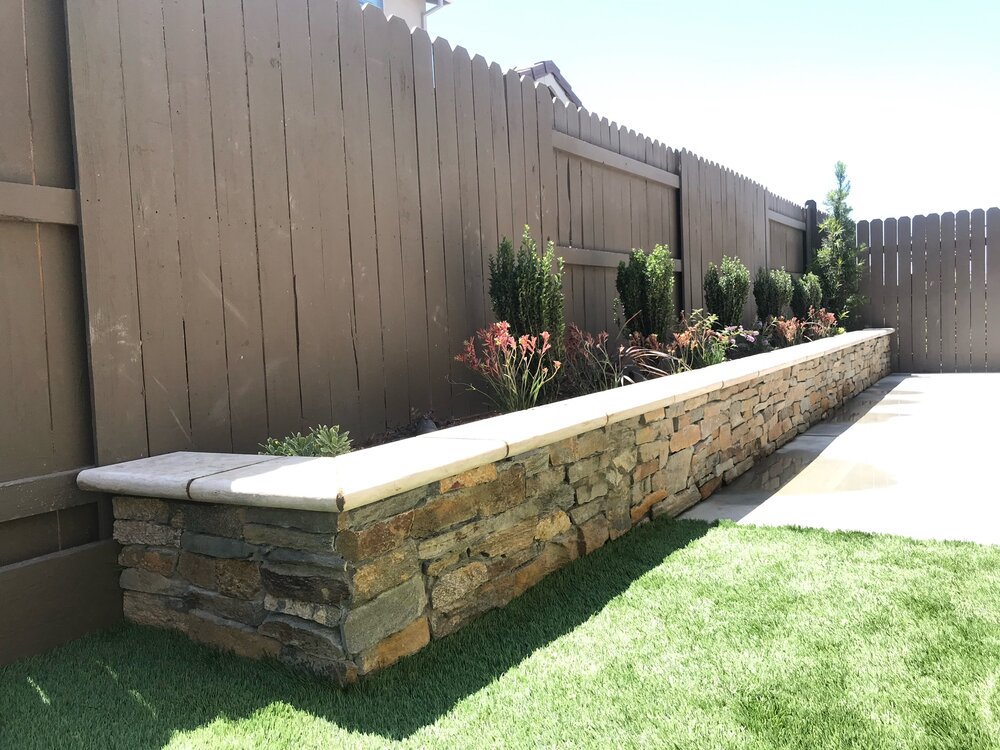4 Simple Techniques For Retaining Wall And Garden Wall Construction
Wiki Article
What Does Retaining Wall And Garden Wall Construction Mean?
Table of ContentsNot known Incorrect Statements About Retaining Wall And Garden Wall Construction More About Retaining Wall And Garden Wall ConstructionThe Main Principles Of Retaining Wall And Garden Wall Construction The 45-Second Trick For Retaining Wall And Garden Wall Construction
If this slope is not regulated, the wall surface will move or fail. Rain that runs the top of a maintaining wall can harm the soil and plants on either side, deteriorating them away. Drainage systems divert this water from at risk locations, decreasing the impact to the framework and its environments.It's been said fifty percent of all the issues with retaining wall surfaces involve drain and water problems, and maintaining water out of these wall surfaces is a huge one. If it's dry, there's little to no opportunity any type of vegetation can take hold - Retaining Wall And Garden Wall Construction. A properly created and mounted system will maintain your wall dry, conserving you money on upkeep as well as replacement expenses.
All retaining walls must consist of water drainage rock even if a draining pipe is not needed. Location filter material over the water drainage rock and also listed below the topsoil. That prevents fine material as well as organic matter from blocking up the drain rock.

Not known Factual Statements About Retaining Wall And Garden Wall Construction
This damages can be pricey to repair, as well as an appropriately mounted drainpipe would have avoided it (Retaining Wall And Garden Wall Construction).:strip_icc()/101404295-8b6c4dcd7eec44b19be8f349ffa765b5.jpg)
A maintaining wall is developed to hold in location a mass of earth or the like, such as the edge of a terrace or excavation.

These are cantilevered from a footing as well as surge above the quality on one side to maintain a higher level quality on the opposite side. The walls should withstand the lateral pressures generated by loosened soils or, in many cases, water stress. Every retaining wall surface supports a "wedge" of soil. The wedge is specified as the dirt which expands beyond the failure plane of the dirt more info here type present at the wall website, and can be determined as soon as the you can try here dirt rubbing angle is known.
9 Easy Facts About Retaining Wall And Garden Wall Construction Shown
This reduction decreases the pressure on the retaining wall. (phi) and also the cohesive toughness (c) of the retained material, as well as the instructions and also size of motion the maintaining framework undertakes.
Water drainage products will reduce or remove the hydrostatic pressure as well as enhance the stability of the material behind the wall surface. Drystone retaining wall surfaces are generally self-draining. As an example, the International Building Regulations needs preserving walls to be designed to guarantee security versus reversing, moving, too much foundation stress and also water uplift; which they be developed for a security aspect of 1. Numerous kinds of retaining walls Construction types of gravity keeping walls Gravity walls depend on their mass (stone, concrete or other hefty product) to stand up to stress from behind and also might have a 'batter' obstacle to enhance security by leaning back toward the kept soil. For short landscape design wall surfaces, they are frequently made from mortarless stone or segmental concrete units (masonry devices).
These walls cantilever tons (like a beam of light) to a big, structural footing, transforming straight pressures from behind the wall to vertical pressures on the ground listed below. Occasionally cantilevered wall surfaces are strengthened on the front, or click to find out more consist of a counterfort on the back, to improve their strength standing up to high lots. Buttresses are short wing walls at appropriate angles to the major pattern of the wall. Diaphragm wall surfaces are expensive wall surfaces, but they conserve time as well as room, as well as hence are made use of in metropolitan constructions. Sheet stack retaining wall surfaces are usually utilized in soft dirt as well as limited areas.
For a fast quote the product is normally driven 1/3 above ground, 2/3 underground, however this may be modified depending upon the setting. Taller sheet stack walls will certainly need a tie-back support, or "dead-man" placed in the dirt a range behind the face of the wall, that is connected to the wall surface, typically by a wire or a rod.
Some Known Incorrect Statements About Retaining Wall And Garden Wall Construction
An anchored keeping wall can be built in any of the previously mentioned designs however additionally consists of added stamina making use of wires or various other keeps secured in the rock or dirt behind it. Normally driven right into the material with boring, anchors are then broadened at the end of the cord, either by mechanical ways or commonly by infusing pressurized concrete, which broadens to create a light bulb in the soil.Report this wiki page